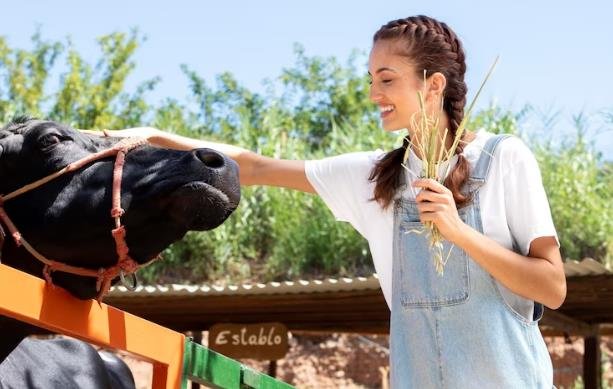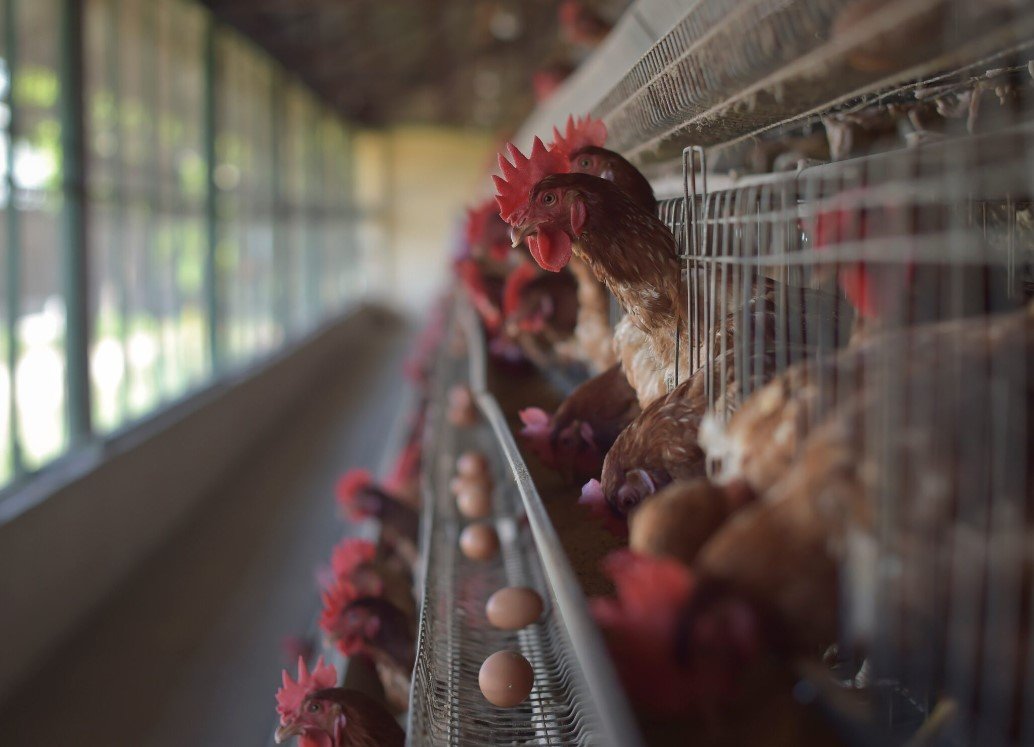Welcome, fellow food explorers! As an experienced culinary enthusiast, I have always been fascinated by the diverse flavors and textures that different cuts of meat offer. One such intriguing cut is the cow tongue, a delicacy enjoyed in many cultures worldwide. This article will take you on a taste exploration of cow tongue, revealing its distinct culinary aspects and why it deserves a place in your kitchen.
Have you ever wondered, what does cow tongue taste like? Well, here’s your answer. Cow tongue has a mild, beefy flavor, much like other cuts of beef. However, what sets it apart is its tender, melt-in-your-mouth texture that is truly unique. It’s this combination of familiar flavor and unique texture that makes cow tongue such a fascinating ingredient to work with. By the end of this read, you’ll have a clear understanding of how to incorporate this versatile cut into your cooking repertoire. So, let’s embark on this flavorful journey together!
What is Cow Tongue and Its Role in Global Cuisine
The cow tongue, also known as beef tongue, is a cut of meat that comes from the tongue of a cow. Despite its unusual nature, it has been a staple in many global cuisines for centuries. Interestingly, cow tongue is not just about taste; it’s also about texture. Its unique, tender consistency sets it apart from other cuts of beef, making it a sought-after ingredient in certain culinary traditions.
Delving deeper into the role of cow tongue in global cuisine, we find that its use varies widely. In Mexican cuisine, for example, cow tongue is used in tacos de lengua, a popular street food. Meanwhile, in French cuisine, it’s often served as ‘langue de boeuf,’ a dish typically accompanied by a flavorful sauce. The Japanese delicacy ‘gyutan’ is another example where cow tongue takes center stage, showcasing its versatility across different cooking styles and flavor profiles.
According to recent culinary trend reports, there’s a growing interest in nose-to-tail eating, encompassing all parts of an animal, including offal like cow tongue. Studies show that approximately 14% of chefs have identified offal as a top trend, indicating an increased willingness among consumers to venture beyond traditional cuts of meat. This trend reflects a broader shift towards sustainable eating practices, where every part of the animal is valued and utilized.
5 Unique Textural Qualities of Cow Tongue
When you think about different cuts of meat, texture plays a significant role in defining the eating experience. The cow tongue is no exception. So, what makes the texture of cow tongue unique? Let’s explore the five distinct textural qualities that make cow tongue a standout ingredient in various dishes worldwide.

What Does Cow Tongue Taste Like: A Flavor Guide
-
Tenderness: Unlike tougher cuts of beef, cow tongue is exceptionally tender. This softness is due to the high collagen content in the tongue, which breaks down into gelatin during slow cooking, creating a melt-in-your-mouth experience.
-
Juiciness: Cow tongue retains a lot of moisture, which contributes to its juiciness. This quality is enhanced further when the tongue is cooked using moist heat methods like braising or stewing.
-
Grainy Texture: The surface of the cow tongue has a grainy texture due to the presence of taste buds. However, this outer layer is often removed after cooking, revealing the smooth, soft meat underneath.
-
Versatility: The texture of cow tongue can be altered significantly depending on the cooking method used. For example, grilling can give it a slightly chewy exterior, while slow-cooking can make it incredibly tender and succulent.
-
Density: Cow tongue is denser than other cuts of beef, giving it a substantial mouthfeel. This density allows it to hold up well in various cooking methods, from grilling to braising.
The unique textural qualities of cow tongue are part of its charm, contributing to its popularity in different culinary traditions. Whether it’s the tenderness, juiciness, grainy texture, versatility, or density, each quality offers a distinct sensory experience that makes eating cow tongue a culinary adventure.
How to Cook Cow Tongue: Step-by-Step Instructions
Cooking cow tongue might seem intimidating due to its unique nature. However, with the right methods and a little bit of patience, you can transform this underrated cut of meat into a tender and flavorful dish. Here’s a step-by-step guide to cooking cow tongue, which will help you navigate the process with ease.
-
Clean the Cow Tongue: Start by rinsing the cow tongue under cold water. Use a brush to scrub off any residue on the surface.
-
Boil the Cow Tongue: Place the tongue in a large pot and cover it with water. Add aromatic ingredients like onions, garlic, bay leaves, and peppercorns to enhance the flavor. Bring the water to a boil and then reduce the heat to a simmer. Cover the pot and let it cook for about 3 hours.
-
Cool and Peel the Cow Tongue: Once the tongue is cooked, remove it from the pot and let it cool. Once it’s cool enough to handle, peel off the outer layer of skin. This will reveal the tender meat underneath.
-
Slice and Serve the Cow Tongue: Cut the tongue into thin slices. At this stage, you can either serve it as is or sear the slices in a hot pan for added flavor and texture.
-
Store the Leftovers: If you have leftovers, store them in an airtight container in the refrigerator. You can reheat them in a pan or microwave before serving.
In summary, cooking cow tongue involves cleaning, boiling, peeling, slicing, and storing. While it does require some time and effort, the end result is a tender and delicious meat that offers a unique culinary experience. So, don’t shy away from trying this interesting cut of meat. With this guide, you’ll be well-equipped to cook cow tongue like a pro!
7 Delicious Recipes Featuring Cow Tongue
If you’ve been adventurous enough to try cooking cow tongue, you may be wondering, “What are some delicious recipes I can make with it?” Well, you’re in luck. Cow tongue is incredibly versatile and can be used in a variety of dishes. Here are seven delectable recipes from around the world that feature cow tongue as the star ingredient.
-
Tacos de Lengua: This popular Mexican street food dish pairs tender pieces of cow tongue with fresh salsa, cilantro, and lime juice, all wrapped up in a soft tortilla.
-
Lengua Estofada: A Filipino delicacy, this stew features slow-cooked cow tongue in a savory tomato sauce with vegetables.
-
Gyutan Yaki: A specialty of Japanese cuisine, gyutan yaki is grilled cow tongue served with a side of tangy dipping sauce and steamed rice.
-
Pickled Tongue: Pickling is a traditional method of preserving cow tongue. The tongue is first boiled and then left to marinate in a pickling brine, resulting in a tangy and flavorful dish.
-
Lengua a la Vinagreta: This Argentinian dish involves serving thinly sliced cow tongue with a tangy vinaigrette and fresh herbs.
-
Lingua alla Romana: In this Roman-style dish, cow tongue is braised with a blend of aromatic herbs and spices, then served with a flavorful sauce.
-
Smørrebrød with Ox Tongue: A Danish open-faced sandwich, this smørrebrød features slices of ox tongue topped with pickles and horseradish cream on rye bread.
As you can see, cow tongue is a versatile ingredient that can be used in a myriad of ways, from tacos and stews to sandwiches and pickled dishes. So, why not give these recipes a try and discover the delightful flavors and textures of cow tongue for yourself?
The Health Benefits and Concerns of Eating Cow Tongue
Cow tongue, like other offal, is not only a culinary delicacy but also a nutrition powerhouse. It is rich in essential nutrients, making it a beneficial addition to a balanced diet. However, as with any food, there are also some health considerations to keep in mind when consuming cow tongue.
The nutritional profile of cow tongue is quite impressive. It’s a good source of high-quality protein, which is essential for muscle growth and repair. Additionally, it’s rich in several vitamins and minerals, including Vitamin B12, Zinc, and Iron. Vitamin B12 is crucial for nerve function and the production of DNA and red blood cells, while Zinc and Iron play vital roles in immune function and oxygen transport, respectively.
However, despite its nutritional benefits, cow tongue is also high in cholesterol and saturated fats, which could be a concern for individuals with certain health conditions. For instance, people with heart disease or high cholesterol may need to limit their intake of high-cholesterol foods like cow tongue. Moreover, like other meats, cow tongue should be consumed in moderation as part of a balanced diet.
In conclusion, while cow tongue offers several nutritional benefits, it’s also important to consider its high cholesterol and saturated fat content. Always remember that balance and moderation are key when it comes to a healthy diet.
Answering the Big Question: What Does Cow Tongue Taste Like?
When it comes to describing the taste of cow tongue, one might be surprised to find that it’s not as strange or off-putting as it might sound. In fact, the flavor of cow tongue is often compared to other cuts of beef. It has a mild, meaty flavor that can take on the taste of the ingredients it’s cooked with.
The unique aspect of cow tongue lies in its texture rather than its taste. The tongue is incredibly tender and has a melt-in-your-mouth quality when cooked properly. This delicate texture sets cow tongue apart from more common cuts of meat and contributes significantly to its appeal in various cuisines.
In essence, if you’re a fan of beef and are open to trying new textures, you’ll likely enjoy cow tongue. Its mild flavor makes it a versatile ingredient that can be used in a range of dishes, from tacos and stews to sandwiches and salads. So, why not step out of your culinary comfort zone and give cow tongue a try? You might just discover a new favorite!
Conclusion
In the world of culinary adventures, cow tongue stands out as a unique and versatile ingredient. Its tender texture and rich flavor make it a popular choice in various cuisines around the globe. Whether it’s served in tacos, stewed in flavorful sauces, or featured in sandwiches, cow tongue offers a distinct sensory experience that can delight adventurous eaters.
While it might seem intimidating at first, cooking and eating cow tongue can be an exciting culinary journey. With its numerous health benefits and the variety of ways it can be prepared, cow tongue invites us to explore beyond our usual food choices. So, why not take a leap of culinary faith and give cow tongue a try? You might just find your new favorite dish!
Frequently Asked Questions
[faq-schema id=”1328″]
















